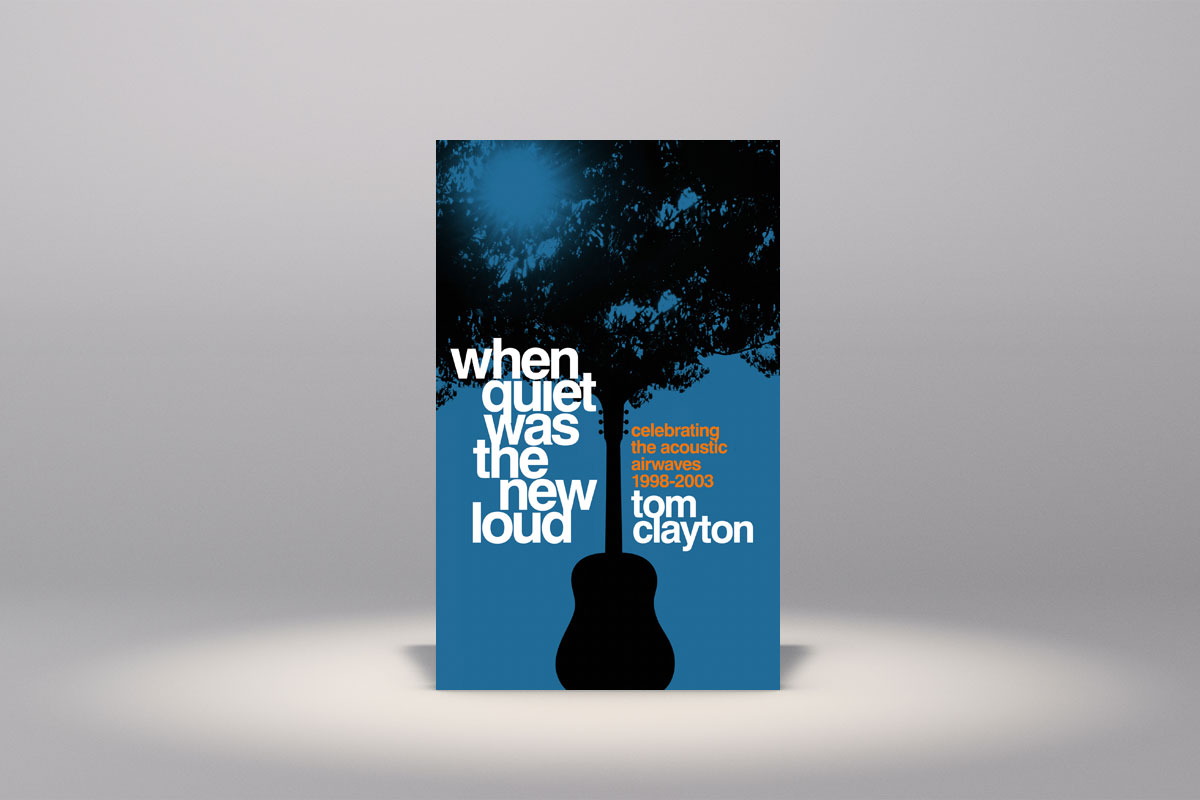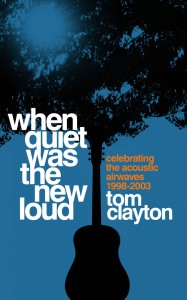An extract from Tom Clayton's introduction to When Quiet Was the New Loud.
It’s as if we panic-squeezed an entire imaginary generation of music in a gap between two decades. It was possibly some sort of pre-millennial defragging … we stripped everything right down before being beamed into the future.
– Andy Votel
When I was about five years old, music arrived in my life in a startling and upsetting way.
I don’t remember much about my parents’ old house. We moved to a larger place shortly after this incident, when my little sister arrived. What I do remember is the big stereo that took pride of place in the living room. I was obsessed with its mysteries: what were those tiny neon columns that danced whenever the music played? Why wasn’t I allowed to touch the turntable? And what on earth did ‘AUX IN’ mean? On idle afternoons I would twiddle with the controls to test the effects I could produce. Usually this would involve accidentally uncovering obscure medium-wave radio stations in different languages, or subjecting my poor parents’ Chris Rea cassettes to borderline obscene levels of bass. This time was different. Having pushed a random series of buttons, then turned a few more knobs just to be sure, I hit ‘play’. The blaring result nearly knocked me off my feet. One of the controls I’d messed with this time was ‘master volume’; those neon columns formed a block. For what must have only been a matter of seconds, the whole house seemed to shake with noise, my young ears enduring a barrage of garbled static. I scrabbled at the controls, desperately trying to work out which one would stop the din. My dad rushed in and restored order, then turned to scold me, before thinking better of it: my eyes were brimming with tears. Those few cacophonous seconds were enough to instil in me a lifelong suspicion of noise. It would be a long time before I approached a stereo again.
***
Let’s press play again: track one, side one, second one. It starts with a brief rumble, like a low-flying aeroplane. Then the sound shimmers and distorts, revealing itself as an effects-heavy guitar, each chord registering only in passing, like washes of rain on a windscreen. It is the riff that underpins ‘Writing to Reach You’, one of Travis’ loveliest songs, and the opening number of their chart-conquering, seemingly inescapable second album, The Man Who.
That collection’s domination of the late 1990s and early 2000s heralded the arrival of a brief, melancholy time in British music. It ran for roughly five years, from the end of 1998 until 2003, and was met with admiration and dismay as it unfolded. But what to call it? The word ‘acoustic’ seems to have stuck, but not much more. In his fine overview of the Britpop era, The Last Party, John Harris observes how its later years were overtaken by a ‘vaguely troubled, ever-so-slightly millennial aesthetic that conveys very little of any meaning’. NME limply named it the ‘New Acoustic Movement’, while Creation Records founder Alan McGee infamously put it in the bluntest of terms – labelling Coldplay’s debut album Parachutes ‘bedwetters’ music’ in a Guardian article previewing that year’s Mercury Music Prize. As we’ll see, it was rather more complicated – and a lot more creditable – than that.
The biggest artists of the period – Travis, Coldplay and David Gray – experienced enormous, almost inconceivable success. More significantly, their best-known singles, ‘Why Does It Always Rain On Me?’, ‘Yellow’ and ‘Babylon’, are now part of the national songbook – radio staples still belted out by buskers and open-mic merchants to this day. Something about this trio of songs, and by extension, the acoustic era, clearly tapped into Britain’s collective pre-millennial identity: vaguely-defined nostalgia, subdued wistfulness, quiet panic… call it what you will.
The public embrace of this affable, homespun or otherwise ‘authentic’ music also reflected a retreat from a decade-long period of musical and social largesse which was rapidly beginning to sour. As NME put it in their 2018 piece reflecting on their own often-short-lived movements, the acoustic era was prompted by ‘the likes of Noel Gallagher and Paul Weller deciding that the nineties had had its fun and it was time it went and sat on the Boring Stool to calm down’. By the late nineties, the leading lights of Britpop were releasing records that spoke of exhaustion with excess: Blur’s grunge-indebted eponymous album of 1997, and its densely experimental follow-up, 13 (1999); Pulp’s gloriously seedy This Is Hardcore (1998); Oasis’ expansive, scattershot Be Here Now (1997). Suede, Supergrass and Catatonia, whose energy and intelligence had illuminated the decade, also produced similarly weary work. It was a time that felt – as Damon Albarn so acutely observed – like the death of a party. Daniel Rachel’s brilliant oral history of Cool Britannia, Don’t Look Back in Anger, contains a multitude of astute first-hand observations, some of which point towards the reasons for this collective slump. Steve Lamacq identifies the twin ghouls of commercialisation and overindulgence: ‘By this point Britpop was everything from Radiohead to Ocean Colour Scene. It was huge and made no sense,’ and later: ‘cocaine killed Britpop … people used it to make up for lack of ideas.’ Contrast this lethargy with the confidence of ‘Writing to Reach You’, where Fran Healy casually works a mention of ‘Wonderwall’ into the first verse – a move which doesn’t just cheekily own the fact the song shares a chord pattern with Oasis’ behemoth, it knocks the idea of Britpop firmly into the past. There was a cultural vacuum waiting to be filled – and following years of laddish belligerence, the time looked right for a more sensitive clutch of artists.
For much of the twentieth century, the appearance of an acoustic guitar on stage meant one of two things: you were about to hear a protest song, or you were about to hear a folk song. If you were really lucky, you might hear a combination of the two! In the late nineties a different sort of acoustic songwriting emerged. With Fran Healy spearheading the trend, it echoed both the cinematic miserablism and cyber-paranoia of late-nineties masterpieces like The Verve’s Urban Hymns and Radiohead’s OK Computer, but subtly turned those qualities into something more grounded and relatable. Richard Ashcroft’s and Thom Yorke’s grandiose lyrics often found them grappling with man’s place in the universe, and while Travis and co. never actively dodged those questions, theirs was ultimately a domestic arena – and it proved wildly successful. At the prospect of epochal change, Brits consumed the cultural equivalent of what we do best: putting the kettle on and griping about the weather.
The encroaching new millennium had a confusing effect on the UK. As the big ‘1’ prepared to become a big ‘2’, and Brits began to realise the significance of what was about to happen, we became increasingly reflective about ourselves. Our cultural output: TV, books, film, music and even public figures were subject to endless ‘best of the millennium’ debates, or packaged up in expansive shiny compilations. That ‘end-of-year’ feeling that critics know well – which prompts within us the need to list, to anthologise, to look back – was multiplied a hundred, even a thousand times over. The UK felt like it was scrambling for closure in the face of whatever was coming next – and for an already nostalgic country, it represented something close to a nervous breakdown. Suddenly we needed, somehow, to sum up our entire history. How could we demonstrate what we’d achieved, and show future generations what this one represented? It was always going to be an impossible task, demonstrated perfectly by the curatorial and financial struggles that dogged the Millennium Dome project throughout the late nineties. But there was something else underpinning this desperate clamour for the past: we were ever so slightly scared of what was around the corner.
The ‘Y2K Problem’, popularly known as the Millennium Bug, now considered merely a smirk-worthy footnote in the history books, was at the time deemed a major security threat, and had world leaders seriously worried; an estimated $300bn was ploughed into readying mainframes around the world. There was a maximalist feel to everything that happened in the run-up to 2000, like a season finale at full volume: in response to a wave of global paranoia that spread throughout 1999, the American Red Cross advised US citizens to have enough food and supplies on hand to endure ‘disruptions of several days to a week’ as New Year’s Eve approached. Religious cults crept back into the news, some of whom concluded that this numerical novelty meant the End of Days was upon us.
On a more earthly level, people were also beginning to realise that this ‘internet’ malarkey was really quite powerful indeed – and could be used for both good and sinister purposes. The way we thought about the so-called information superhighway was changing rapidly. It had gone from something you ‘went on’ for twenty minutes a day – after you’d cleared everyone off the landlines and endured several minutes of tortuous dial-up noises – to an increasingly indispensable way of life. The faster it grew, the more influence it gathered, and its far-reaching possibilities became clearer by the day. The internet was about to become the dominant means of communication, triggering an age of instant information which society was arguably ill-prepared for; we are still dealing with the ramifications today. Perhaps, then, our new-found taste for the comforting, wistful music of David Gray et al reflected the hesitancy we felt towards the impending challenges of a new century. It turned out we were right to be concerned.

